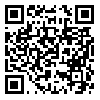Volume 30, Issue 184 (5-2020)
J Mazandaran Univ Med Sci 2020, 30(184): 179-193 |
Back to browse issues page
Download citation:
BibTeX | RIS | EndNote | Medlars | ProCite | Reference Manager | RefWorks
Send citation to:



BibTeX | RIS | EndNote | Medlars | ProCite | Reference Manager | RefWorks
Send citation to:
Kialashaki E, Fakhar M, Akhtari J, Faridnia R, Keighobadi M. Kinetoplast DNA: A Promising Drug Target for Treatment
of Leishmaniasis. J Mazandaran Univ Med Sci 2020; 30 (184) :179-193
URL: http://jmums.mazums.ac.ir/article-1-14303-en.html
URL: http://jmums.mazums.ac.ir/article-1-14303-en.html
Abstract: (2549 Views)
Leishmaniasis is a vector-borne zoonotic disease caused by various species of the genus Leishmania, (trypanosomatidae family) that is transmitted by phlebotomine sandflies. The disease can present in a range of clinical forms, including dermal lesions, metastasis mucocutaneous forms, and fatal visceral forms. In this non-systematic review, we aimed at introducing the role of kinetoplast DNA (kDNA) and dependent topoisomerases (TPI) as potential chemotherapeutic targets for treatment of leishmaniasis. The Leishmania parasite has a mitochondrial DNA located in the attached circles. KDNA replication process is very complex and a large number of proteins are involved. Some of them are classified as topoisomerases, which play major biological roles in the effective cell processes in the topology, synthesis, and organization of kDNA and constitute the main drug target in kinetoplast for leishmaniasis cure. Several studies have shown that the inhibitors of TPI exchange these enzymes into intracellular cell toxins and provide an appropriate tool for killing the parasite in the host. DNA binding drugs have also been reported as therapeutic agents against leishmanial infections.
Type of Study: Review |
Subject:
parasitology
Send email to the article author
| Rights and permissions | |
 |
This work is licensed under a Creative Commons Attribution-NonCommercial 4.0 International License. |







